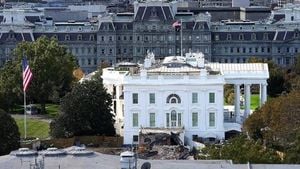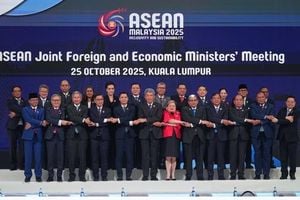Researchers have uncovered new insights on how muscle stem cells (MuSCs) influence their niche environment, particularly through the signaling axis involving the transcription factor Yin Yang 1 (YY1) and C-C motif chemokine ligand 5 (CCL5). This study, which focuses on Duchenne muscular dystrophy (DMD), highlights the detrimental effects of YY1 deletion within MuSCs, exacerbated muscle dystrophy, and provides compelling evidence for novel therapeutic strategies aimed at muscle regeneration.
Adult MuSCs are fundamental for muscle repair, residing beneath the basal lamina and remaining quiescent until activated by injury. Their repair functions are heavily influenced by interactions with surrounding cells including macrophages (MPs) and fibro-adipogenic progenitors (FAPs). DMD, characterized by dystrophin deficiency leading to chronic muscle inflammation and degeneration, disrupts these interactions, causing fibrosis and impaired regeneration.
The research team, affiliated with The Chinese University of Hong Kong, utilized mdx mice—a model widely recognized for DMD—to investigate the consequences of intrinsic YY1 deletion on MuSC functionality. They discovered significant alterations within the muscle niche following YY1 loss, which resulted not only in increased numbers but also changes to composition and heterogeneity of MPs and FAPs.
The study identified the YY1-CCL5 axis as central to MuSC interactions with these supporting cells. By deleting YY1, the potential of MuSCs to repress Ccl5 transcription was diminished, leading to heightened CCL5 secretion. Increased levels of CCL5, known to promote MP recruitment via the CCL5/CCR5 signaling pathway, were observed, which aggravated inflammatory responses within the muscle. "Augmented CCL5 secretion promotes MP recruitment via CCL5/C-C chemokine receptor 5 (CCR5) crosstalk," the authors stated. This finding suggests MuSCs actively shape their environmental niche and exemplifies how transcriptional regulation within these cells can have extensive impacts.
Through single-cell RNA sequencing and other methodologies, the researchers could delineate the dynamics of the muscle microenvironment pre- and post-YY1 deletion. Notable findings included the unexpected accumulation of FAPs and MPs, alongside significant reductions of MuSCs. Such shifts are particularly concerning, as they indicate disrupted repair processes potentially leading to chronic inflammation. The analysis highlighted how YY1 deletion influenced immune gene expression, rendering MuSCs more immunogenic and less effective at self-renewal.
Intriguingly, the researchers also administered Maraviroc, a pharmacological CCR5 antagonist, which resulted in improvements to muscle pathology and performance. “Maraviroc-mediated pharmacological blockade of the CCL5/CCR5 axis effectively mitigates muscle dystrophy and improves muscle performance,” they noted, indicating promising directions for future therapeutic interventions. By alleviating pathogenic recruitment of MPs, targeting CCL5 could help restore balance to the muscle microenvironment.
Overall, findings demonstrate the pivotal role MuSCs play within their niche by regulating cellular dynamics through immune secretory functions. The ability of YY1 to facilitate promoter-enhancer interactions—ensuring effective regulation of Ccl5 transcription—demonstrates the intricacies of cellular interactions within muscle repair processes. The authors conclude, "YY1 represses Ccl5 transcription by binding to its enhancer, facilitating promoter-enhancer looping,” reinforcing the need for greater comprehension of these molecular mechanisms to inform the development of targeted therapies for DMD and similar conditions.



